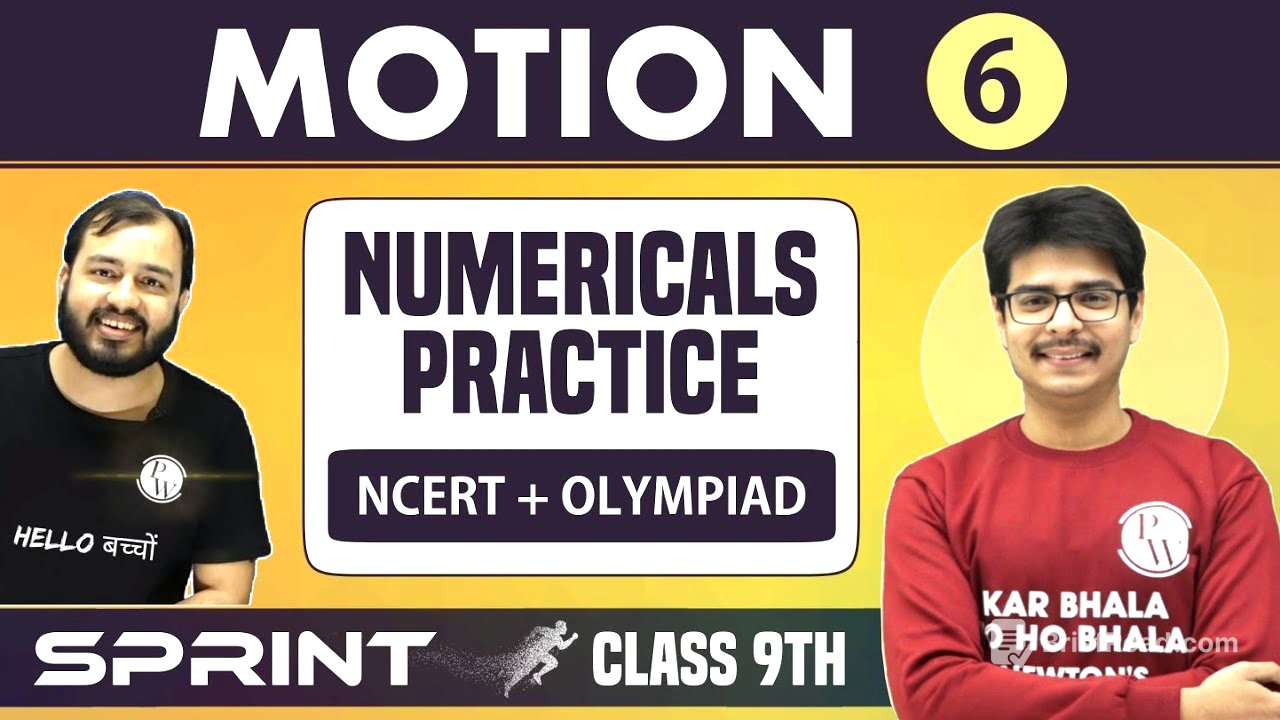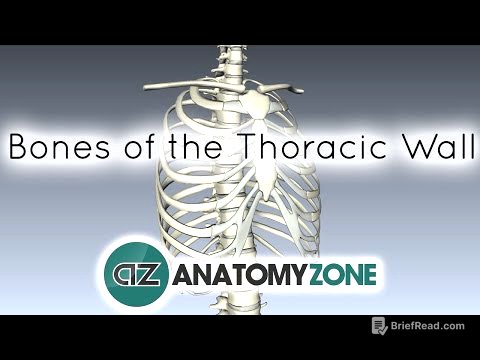TLDR;
This video provides a practice session focused on NCERT numerical problems from Chapter 8, "Motion." It covers key concepts like average speed, equations of motion, and graphical representation of motion, and circular motion. The instructor solves several NCERT questions, emphasizing the importance of understanding the underlying concepts and problem-solving approaches.
- Average speed calculations
- Application of motion equations
- Graphical representation of motion
- Circular motion problem-solving
Introduction [0:00]
The session is dedicated to solving NCERT numericals from Chapter 8, Motion, focusing on tempered glass and challenger questions from previous lectures. The lecture aims to address the demand for NCERT-specific problem-solving, complementing the existing discussions of NCERT questions and more advanced problems.
Average Speed Calculation [0:50]
The lecture begins with a question about Abdul, who drives to school at an average speed of 20 km/h and returns home at 30 km/h. The problem requires calculating Abdul's average speed for the entire trip. The instructor emphasizes the fundamental formula for average speed: total distance divided by total time. The solution involves assuming the distance to school as 'x', calculating the time taken for each leg of the journey using the formula time = distance/speed, and then applying the average speed formula.
Situations with Constant Acceleration [7:43]
The discussion shifts to hypothetical situations involving constant acceleration. The first scenario asks if an object can have acceleration while at rest. The instructor explains that this is possible, citing the example of an object at its maximum height during vertical motion, where its velocity is momentarily zero, but gravity still exerts acceleration. The second scenario explores whether an object's acceleration can be perpendicular to its direction of motion, using uniform circular motion as an example, where centripetal acceleration is always directed towards the center, perpendicular to the object's tangential velocity.
Motorboat Problem [11:53]
A motorboat starts from rest and accelerates at a constant rate of 3 m/s² for 8 seconds. The problem requires finding how far the boat travels during this time. The instructor advises writing down the given information (initial velocity, acceleration, time) and identifying what needs to be found (displacement). The appropriate equation of motion, s = ut + (1/2)at², is applied to calculate the displacement.
Trolley on Inclined Plane [14:54]
A trolley accelerates at 2 cm/s² down an inclined plane. Starting from rest, the problem asks for its velocity after 3 seconds. The instructor emphasizes the importance of diagrams for clarity and visualization. The equation v = u + at is used to find the final velocity, noting the units are in centimeters per second.
Racing Car Problem [18:06]
A racing car accelerates uniformly at 4 m/s². The problem asks for the distance the car covers after 10 seconds, assuming it starts from rest. The instructor clarifies that in straight-line motion, distance and displacement are the same. The equation s = ut + (1/2)at² is applied to find the distance.
Brakes Application Problem [20:02]
Brakes are applied to a car, causing a deceleration of 6 m/s² in the opposite direction. The problem asks for the distance the car travels before stopping, given that it takes 2 seconds to come to a halt. The instructor highlights that deceleration means negative acceleration. First, the initial velocity (u) is calculated using v = u + at, and then the distance is found using s = ut + (1/2)at².
Stone Dropped from a Height [24:35]
A stone is gently dropped from a height of 20 meters, with its velocity increasing uniformly at 10 m/s². The problem asks for the time it takes to reach the ground and its final velocity. The instructor explains that "gently dropped" implies an initial velocity of zero. The equation v² - u² = 2as is used to find the final velocity, and then v = u + at is used to find the time.
Stone Thrown Upwards [31:08]
A stone is thrown upwards with an initial velocity of 5 m/s, and its deceleration is 10 m/s². The problem asks for the maximum height it reaches and the time it takes to reach that height. The instructor notes that at maximum height, the final velocity is zero. The equation v² - u² = 2as is used to find the displacement (height), and then v = u + at is used to find the time.
Nature of Distance-Time Graph [35:45]
The lecture transitions to graphical representation of motion, asking about the nature of a distance-time graph for uniform motion. The instructor explains that it is a straight line. For non-uniform motion, the graph is a curve.
Distance-Time Graph at Rest [36:58]
The instructor describes a distance-time graph where the distance remains constant while time increases, illustrating an object at rest.
Speed-Time Graph for Uniform Motion [37:53]
The lecture explains that a speed-time graph parallel to the time axis indicates uniform motion, where the speed remains constant over time.
Area Under Velocity-Time Graph [39:17]
The instructor discusses that the area under a velocity-time graph represents displacement.
Challenge Question 1: Momentum Change in Circular Motion [40:25]
A body of mass 'm' moves on a circular path of radius 'r' with velocity 'v'. The problem asks for the change in momentum after half a rotation. The instructor explains that after half a rotation, the velocity becomes -v. The initial momentum is mv, and the final momentum is -mv. The change in momentum (final - initial) is -2mv.
Challenge Question 2: Displacement in Semi-Circular Motion [43:52]
A particle moves on a circular path of radius 35 meters. The problem asks for the distance and displacement after completing a semi-circle. The instructor explains that the displacement is the diameter of the circle (70 meters), while the distance is half the circumference (πr).
Challenge Question 3: Displacement After Multiple Rounds [45:18]
A player covers a circular path of radius 'r' in 40 seconds. The problem asks for the displacement after 2 minutes and 20 seconds. The instructor calculates the total time as 140 seconds. After one complete round (40 seconds) and two complete rounds (80 seconds) and three complete rounds (120 seconds), the displacement is zero. The remaining 20 seconds covers a semi-circle, so the displacement is the diameter (2r).
Conclusion [47:03]
The instructor concludes by emphasizing the importance of understanding concepts and practicing problems. He advises focusing on NCERT and related books, mastering concepts like average speed, equations of motion, and graphical representation of motion.


![[단독] 김영훈, 5년치 지방소득세 안 내다 '지각 납부'…집시법 등 전과 5범 [뉴스9]](https://wm-img.halpindev.com/p-briefread_c-10_b-10/urlb/aHR0cDovL2ltZy55b3V0dWJlLmNvbS92aS9XWEdKZ3daSXJwMC9ocWRlZmF1bHQuanBn.jpg)





